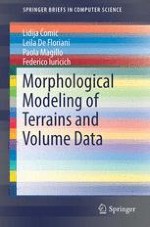
2014 | OriginalPaper | Buchkapitel
2. Morphology Computation Algorithms: Generalities
verfasst von : Lidija Čomić, Leila De Floriani, Paola Magillo, Federico Iuricich
Erschienen in: Morphological Modeling of Terrains and Volume Data
Verlag: Springer New York
Aktivieren Sie unsere intelligente Suche, um passende Fachinhalte oder Patente zu finden.
Wählen Sie Textabschnitte aus um mit Künstlicher Intelligenz passenden Patente zu finden. powered by
Markieren Sie Textabschnitte, um KI-gestützt weitere passende Inhalte zu finden. powered by